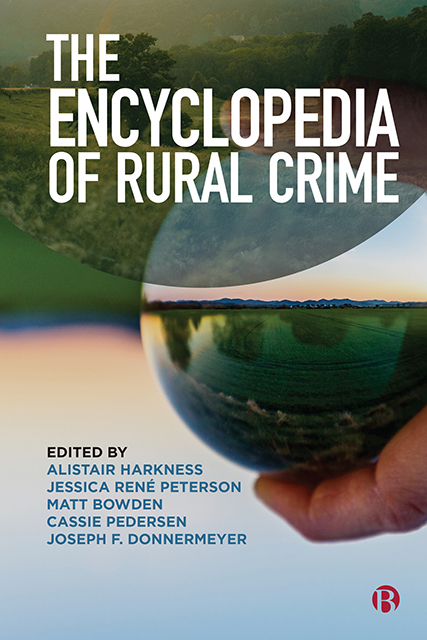Book contents
31 - Acquisitive Farm Crime
Published online by Cambridge University Press: 20 June 2023
Summary
Farm crime refers to criminal offending which impacts upon the function of the pastoral, agricultural and aquaculture industries. Common forms of victimization include trespassing, illegal shooting and hunting, breaking and entering, the theft of equipment and tools, with livestock theft being the ‘quintessential rural crime’, as well as the theft of farm supplies and inputs (such as fencing supplies, chemicals and fuel), firearms, water, fruit crops and personal items.
Farm crime devastates lives and communities in rural settings, provincial towns, smaller urbanized regional areas and at the urban fringe. Offending on farming sites has been largely forgotten historically in the canon of scholarly literature, although it is now receiving far greater attention, not least because of the financial implications for farming communities but also for its psychological and sociological impacts.
Aspects of locational context and cultural geography have deeply shaped incidents and responses to crime in rural spaces. This is especially true of farms where the tyranny of distance, lack of access to public services, dense acquaintanceship networks and ideals of self-sufficiency are salient. Evidence also suggests a significant ‘dark figure of crime’ in rural spaces (where crime occurs but is not reported and recorded), and sometimes strained relationships between the police and the policed.
Victimization
The impact of crime on farmers, workers and other rural property owners is significant. Victims of farm crime not only sustain physical losses as a consequence of theft, but also lost work time and impact on annual income, higher insurance premiums and the loss of breeding stock and the intellectual property in developing a blood line.
Productive farmers may leave the sector owing to the personal stress and anxiety associated with victimization. Farm crime can have additional flowon effects, impacting pricing, distribution and the availability of produce. Additionally, high levels of victimization contribute to a loss of community cohesiveness, decreasing the capacity of communities to prevent and respond to crime more generally. In regional areas, perceptions of a community, its safety, people and culture can affect tourism, impacting on its attraction of high-quality health professionals or teachers and retention of other essential service providers.
- Type
- Chapter
- Information
- The Encyclopedia of Rural Crime , pp. 125 - 128Publisher: Bristol University PressPrint publication year: 2022

